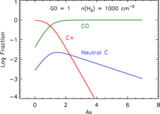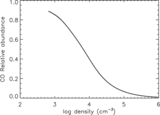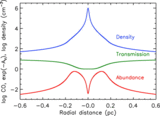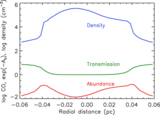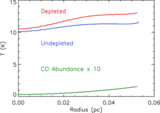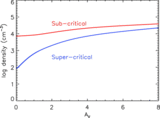Image Details
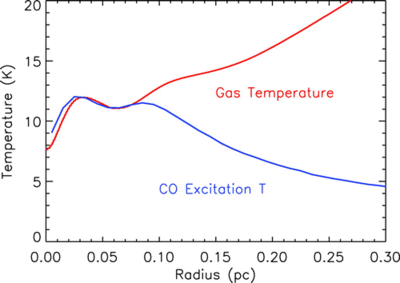
Caption: Fig. 7.
Comparison of the gas temperature and the excitation temperature of CO(1–0) in an unstable, prestellar, thermally supercritical core. Because the gas density (Fig. 3) and abundance of CO (Fig. 5) are so low in the outer core, the excitation temperature of CO declines with increasing radius even as the gas temperature increases. In the center of the core, the CO lines are optically thick and the excitation temperature is approximately the same as the gas temperature. Parameters are listed in Table 1.
Copyright and Terms & Conditions
© 2008. The American Astronomical Society. All rights reserved. Printed in U.S.A.


